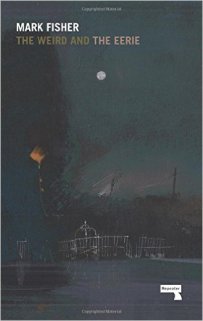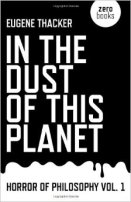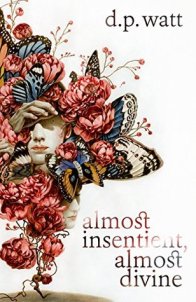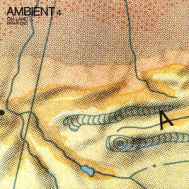Purchase The Weird and The Eerie here.
My dear unknown friend,
 Here once again we will make a slight change of course but as William de Kooning once said, “I must change to stay the same.” For this review we are leaving the realm of fiction to explore the last work of noted critic and philosopher Mark Fisher and his book, The Weird and The Eerie. Over time Lovecraft’s oeuvre has proven a rich source of inspiration for both social critics and philosophers from Deleuze and Guattari on.
Here once again we will make a slight change of course but as William de Kooning once said, “I must change to stay the same.” For this review we are leaving the realm of fiction to explore the last work of noted critic and philosopher Mark Fisher and his book, The Weird and The Eerie. Over time Lovecraft’s oeuvre has proven a rich source of inspiration for both social critics and philosophers from Deleuze and Guattari on.
In the mid-nineties a student-run interdisciplinary collective was established out of the University of Warwick’s philosophy department called the Cybernetic Culture Research Unit (Ccru), founded by Sadie Plant and Nick Land. The collective mirrored its time by focusing on cyberfeminism, jungle music, post-structuralism, science fiction, and a theory developed from the techniques of H.P. Lovecraft called “Hyperstition”. One can find many varied discussions of hyperstition on the internet but in a nutshell hyperstition was the idea of fictional qualities that make themselves real, combining the words hyper and superstition to suggest how a fictional idea can take hold in reality. Consider for a second how many librarians have had to patiently explain that the Necronomicon is in fact not real and you start to get the idea. Lovecraft’s work and techniques of bricolage loom large within Ccru: Writings 1997-2003. A quick perusal of chapters entitled, “Part-2: Cthulhu Club”, “Tales of the Frog People” and “Lemurian Time War” would lead a reader of Weird Tales to feel quite at home. Ccru’s work, discussions, and seminars had far-reaching effects and its list of luminaries include the Iranian philosopher Reza Negarestani, author of the theory-fiction tome Cyclonopedia, Ray Brassier, author of Nihil Unbound: Enlightenment and Extinction, experimental electronic musician and founder of the music label Hyperdub, Kode9, novelist Hari Kunzru and of course Mark Fisher himself.
 Lovecraft’s influence has rippled onward, most notably in Eugene Thacker’s Horror of Philosophy trilogy which quite humorously ended up in a Jay-Z video (you can hear the story of that journey here courtesy of Radiolab) but also in the work of Graham Harman, Dylan Trigg, and David Peak among countless others. I write this not to show some vast and considerable knowledge but rather to demonstrate first that Lovecraft has served as a force of fascination for philosophers and social critics for decades, The Weird and The Eerie is not a sudden blip or aberration, and also that Mark Fisher is intimately familiar with Lovecraft’s body of work, indeed has decades of close kinship with the genre of the weird and the fantastic and puts it to brilliant, insightful use within this thin volume.
Lovecraft’s influence has rippled onward, most notably in Eugene Thacker’s Horror of Philosophy trilogy which quite humorously ended up in a Jay-Z video (you can hear the story of that journey here courtesy of Radiolab) but also in the work of Graham Harman, Dylan Trigg, and David Peak among countless others. I write this not to show some vast and considerable knowledge but rather to demonstrate first that Lovecraft has served as a force of fascination for philosophers and social critics for decades, The Weird and The Eerie is not a sudden blip or aberration, and also that Mark Fisher is intimately familiar with Lovecraft’s body of work, indeed has decades of close kinship with the genre of the weird and the fantastic and puts it to brilliant, insightful use within this thin volume.
The Weird and The Eerie starts with Lovecraft, for as Mark Fisher writes, “Any discussion of weird fiction must begin with Lovecraft. In stories that were published in pulp magazines, Lovecraft practically invented the weird tale, developing a formula which can be differentiated from both fantasy and horror fiction.” As Fisher points out, though Lovecraft is often classified as a horror writer, his writings seldom evoke a feeling of horror within their reader. Rather it is a sense of fascination, a fascination mixed with a sense of trepidation, that is the hallmark of a Lovecraftian tale.
From there Fisher writes of Lovecraft’s materialism, how this materialism allowed him to establish the difference which powered the sense of trepidation that lives within Lovecraft’s stories. As Fisher notes, within the space of reading three to four of Lovecraft’s stories the reader knows full well how all of his future stories will run. One does not read Lovecraft for the plot twist but rather for the mood, the aforementioned sense of fascination coupled with dread.
Fisher next turns his gaze to H.G. Wells’ tale “The Door in the Wall”. Here Fisher writes of the importance of portals between worlds in weird fiction, the Silver Key of the Randolph Carter stories* and David Lynch’s use of doorways, curtains and gateways. Unlike works of fantasy which concern themselves with the worlds on the other side of these thresholds, weird tales focus on the sense of being “in between” and a sense of longing. Once returned reality seems “unreal,” not enough to satisfy one who has crossed over and returned.
 This is just the start of a beautiful journey through The Weird as Fisher uses The Fall’s albums between 1980 to 1982 (the single “City Hobgoblins”, Grotesque (After the Gramme) and Hex Enduction Hour) to discuss the use of the grotesque in weird fiction, Tim Powers’ novel The Anubis Gates to discuss Hofstadter’s “strange loops” or “tangled hierarchies” and the films of Fassbinder, Lynch and Tarkovsky to demonstrate the sense of “cognitive estrangement” that lies at the heart of so many a weird tale.
This is just the start of a beautiful journey through The Weird as Fisher uses The Fall’s albums between 1980 to 1982 (the single “City Hobgoblins”, Grotesque (After the Gramme) and Hex Enduction Hour) to discuss the use of the grotesque in weird fiction, Tim Powers’ novel The Anubis Gates to discuss Hofstadter’s “strange loops” or “tangled hierarchies” and the films of Fassbinder, Lynch and Tarkovsky to demonstrate the sense of “cognitive estrangement” that lies at the heart of so many a weird tale.
In the second part of the book Fisher turns to The Eerie. This section was the part that made me particularly happy. Much as I enjoyed the first section on The Weird this second section on The Eerie I found particularly illuminating. In my previous reviews of  Andrew Michael Hurley’s The Loney, D.P. Watt’s Almost Insentient, Almost Divine and A W Baader’s We Are the Makers of Maps I’ve publicly struggled with their use of folk horror. There was something in the manner with which writers from the UK utilized folk horror that I was missing. It was a nebulous sense of loss, something just beyond my grasp that was infuriating in my inability to articulate just what it was I was failing to perceive. Hurley, Wattts, and Timothy Jarvis have all used the Pace Eggers, Mummers and Punch and Judy in such a way that while I can appreciate these traditions on an intellectual level there remains a nagging suspicion that yes, there is a deeper and murkier vein running through the sub-strata. All of this coalesced for me when I stumbled across Robert Macfarlane’s brilliant essay in The Guardian, “The eeriness of the English countryside”. When the English landscape is being used as a political force, a call to an imaginary simpler time, “Keep Calm and Relax”, “The Great British Baking Show” and “Downton Abbey”, the eerie is there to remind us of the darker, hidden side of that “pastoral land”. As Macfarlane writes so beautifully:
Andrew Michael Hurley’s The Loney, D.P. Watt’s Almost Insentient, Almost Divine and A W Baader’s We Are the Makers of Maps I’ve publicly struggled with their use of folk horror. There was something in the manner with which writers from the UK utilized folk horror that I was missing. It was a nebulous sense of loss, something just beyond my grasp that was infuriating in my inability to articulate just what it was I was failing to perceive. Hurley, Wattts, and Timothy Jarvis have all used the Pace Eggers, Mummers and Punch and Judy in such a way that while I can appreciate these traditions on an intellectual level there remains a nagging suspicion that yes, there is a deeper and murkier vein running through the sub-strata. All of this coalesced for me when I stumbled across Robert Macfarlane’s brilliant essay in The Guardian, “The eeriness of the English countryside”. When the English landscape is being used as a political force, a call to an imaginary simpler time, “Keep Calm and Relax”, “The Great British Baking Show” and “Downton Abbey”, the eerie is there to remind us of the darker, hidden side of that “pastoral land”. As Macfarlane writes so beautifully:
“If the eerie is… about the experience of being watched by a presence that you cannot perceive, then this, certainly, is another cause for its present relevance. For the state has never before been as able to detect and follow the movements of its subjects. Nor – since Snowden – have we been as conscious of the extent to which we are continuously being observed by unseen forces, not always operating with what Fanshawe called “pleasant intent”. Yet state surveillance is no longer testified to in the landscape by giant edifices. Instead it is mostly carried out in by software programs running on computers housed in ordinary-looking government buildings, its sources and effects – like all eerie phenomena – glimpsed but never confronted.”
Mark Fisher starts his section on The Eerie by writing that while the weird is marked by an exorbitant presence, “The eerie, by contrast, is constituted by a failure of absence or by a failure of presence. The sensation of the eerie occurs either when there is something present where there should be nothing, or is there is nothing present when there should be something.” He uses by example the “eerie cry”. “A bird’s cry is eerie if there is a feeling that there is something more in (or behind) the cry than a mere animal reflex or biological mechanism…”. The second mode of the eerie (the failure of presence) is conveyed via the feeling associated with ruins or other abandoned buildings. The question of agency is central to the sense of the eerie and we are left searching for explanations whether confronted with Stonehenge, Easter Island or the Marie Celeste.
Fisher turns first to Daphne du Maurier’s well known tale, “The Birds”. As noted previously a bird’s cry is often considered eerie if it seems to contain more than biological agency. In du Maurier’s story the birds have come together to assert an agency but the nature of this agency lays beyond the understanding of mankind. For reasons unknown the birds co-operate with one another, laying aside previously established patterns of behavior to launch a murderous assault against mankind. If you are familiar with Hitchcock’s film of the same name then du Maurier’s story will surprise you as it concerns a family residing in gray Cornwall that is still in the grip of postwar austerity. As the story continues the horror of the raw physical attack is slowly replaced by the eerie as one explanation after another is offered then cast aside for the bird’s inexplicable behavior.
 Fisher then compares what is arguably M.R. James’ most famous tale, “Oh Whistle and I’ll come to You, My Lad” with Brian Eno’s Ambient 4: On Land. In the sleevenotes to Ambient 4 Eno wrote, “the landscape has ceased to be a backdrop for something else to happen in front of; instead, everything that happens is a part of the landscape. There is no longer a sharp distinction between foreground and background.” Reading that I immediately recalled the tone evoked by A(W) Baader’s “Glen Dhearg” in his book Hinterland (previously reviewed here). This is Fisher’s gift, the ability to pull from disparate fields and media with an all-inclusive gaze, to reveal what was sitting in full view yet overlooked until this very moment.
Fisher then compares what is arguably M.R. James’ most famous tale, “Oh Whistle and I’ll come to You, My Lad” with Brian Eno’s Ambient 4: On Land. In the sleevenotes to Ambient 4 Eno wrote, “the landscape has ceased to be a backdrop for something else to happen in front of; instead, everything that happens is a part of the landscape. There is no longer a sharp distinction between foreground and background.” Reading that I immediately recalled the tone evoked by A(W) Baader’s “Glen Dhearg” in his book Hinterland (previously reviewed here). This is Fisher’s gift, the ability to pull from disparate fields and media with an all-inclusive gaze, to reveal what was sitting in full view yet overlooked until this very moment.
From there Fisher turns towards the works of Nigel Kneale (Quatermass) and Alan Garner (Red Shift and The Owl Service). Here Fisher notes that unlike M.R. James who took on the supernatural on its own terms “Kneale and Garner explore the contours of what you might call an eerie Thanatos – a transpersonal (and transtemporal) death drive, in which the “psychological” emerges as the product of forces from the outside.” Using Kneale’s Quatermass films Fisher demonstrates how the same materialism that drove Lovecraft’s weird tales can also evoke the same sense of the eerie, no external force required.
Watching Fisher compare and contrast the works of Margaret Atwood and Jonathan Glazer, tracing the eerie through the films of Stanley Kubrick, Andrei Kubrick, Andrei Tarkovsky, and Christopher Nolan, and then finishing with a chapter on Joan Lindsay’s novel Picnic at Hanging Rock is simultaneously delightful and breathtaking. The value of a book such as The Weird and The Eerie is that it endows us with new eyes with which to view those works we are already familiar, offers us fresh avenues of approach and simultaneously points us towards new treasures we have yet to excavate. I know my own “to be read” pile looms ominously skyward after finishing this slim volume.
Purchase The Weird and The Eerie here.
*I have been enjoying Lovecraftian Science and their focus in 2017 on the Silver Key. If you have not stumbled across this particular slice of goodness yet I would highly encourage you do so.
Soundtrack for this review:
Main article photograph by szydlak. See more of their work here.
This review written by Acep Hale.


TUT PROSTO
LikeLike
Pingback: Mark Fisher Plumbs New Depths, Explores Uncharted Territories in “The Weird and The Eerie” | Haint-Blue Shudders·
Oh my God, that looks amazing!
LikeLike